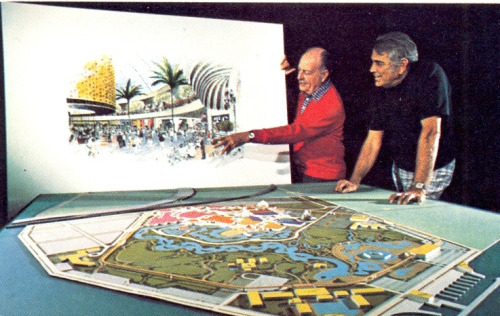A Tale of Two Soarin’s
In some ways, nothing has changed. There’s still grandiose and emotionally charged music. Cultural and natural landmarks beckon and shimmer. Excited passengers gasp and whoop when surprised with a bird’s eye view of the world that they very rarely get to see from such an angle. But in other ways, everything has changed: Soarin’ is no longer flying over California, but is now flying around the world. The scope of the attraction has changed, altering the thematic landscape of EPCOT. In so doing, Soarin’s change is less of a transformation, but a transition from a narrow and specialized approach to an experience that is now broad and sweeping. These changes are both harmful and helpful to how Soarin’ now operates and how it makes a thematic statement that fits into EPCOT. I will not (consciously) focus on which version of the attraction is better, but rather, attempt to describe and analyze each, and showcase their strengths and weaknesses. That being said, I predict that it will be very easy to parse out what version of the attraction I prefer, if I don’t outright say so.
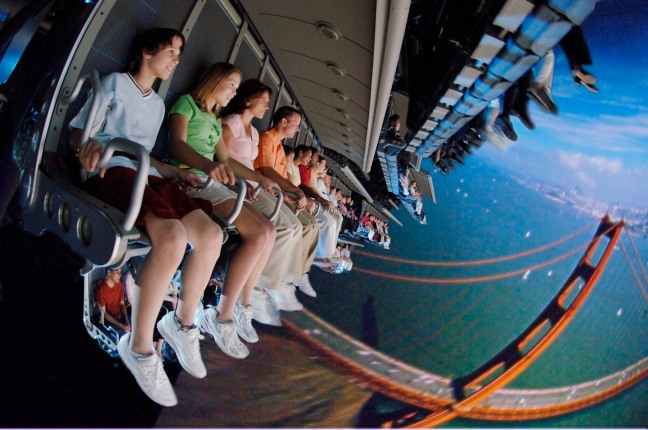

Soarin’ Over California began operations in 2001 in Disney’s California Adventure. Here, the park’s connection to the attraction’s source material was obvious and logical, despite undergoing a fairly radical aesthetic shift near the end of Soarin’ Over California’s tenure. Both Condor Flats and Grizzly Peak Airfield represented environments in Califo rnia and honored the state’s rich history of aviation and environmentalism. Grizzly Peak Airfield, which premiered in 2015, aligned more closely with the content actually seen on screen on Soarin’ – the scenes of the High Sierras and Yosemite National Park jived well with the aesthetic profile of the area and complimented the land’s references to famed naturalist John Muir.
rnia and honored the state’s rich history of aviation and environmentalism. Grizzly Peak Airfield, which premiered in 2015, aligned more closely with the content actually seen on screen on Soarin’ – the scenes of the High Sierras and Yosemite National Park jived well with the aesthetic profile of the area and complimented the land’s references to famed naturalist John Muir.

Meanwhile, EPCOT’s Soarin’ over California attraction had a tenuous and tangential connection to the park’s thesis statement. Although its connection to EPCOT was never really explained by Imagineering to the general public, I always viewed Soarin’s thematic connection to EPCOT as subtle, but not needing exhaustive mental gymnastics to justify its inclusion. In EPCOT, Soarin’ functioned as a celebration of people using, preserving, and interacting with the land and the environment. Nature played a starring role. Yes, there were cityscapes and man-made wonders on display, too, but The Land pavilion’s main ideas center on symbiosis and humanity’s appropriate use of natural resources. With this in mind, Soarin’ was a fairly natural fit for EPCOT.

Perhaps the greatest connection that Soarin’ enjoyed with EPCOT’s thematic material was its nature as a travelogue film. Just like the films of World Showcase, Soarin’ over California was dedicated to distilling the essence of a destination into a relatable and coherent ‘summary experience’ of the destination at hand. However, despite being akin to a World Showcase travelogue, Soarin’ did not feature a foreign land, but instead was centered on a domestic scenery, altering the context by which it was viewed in. For Californians, it was a source of pride and an overview of their home state. For visitors, it was a glimpse of what else a vacation in California could offer. In EPCOT, Soarin’ over California was a chance to see a destination that was far away from Florida and exotic, but still reachable and relatable.
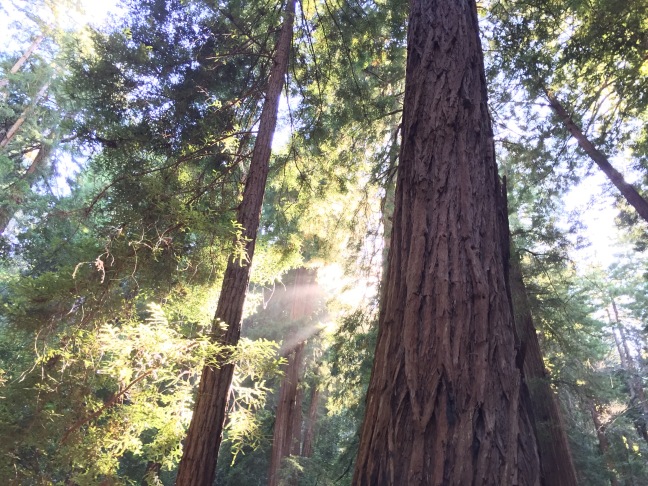
Thematic connections aside, Soarin’ over California’s “relatability” is really what defined the attraction and gave it a sense of warmth that made it such a standout attraction. It really didn’t matter if you were intimately familiar with the Californian sites shown off or if you were just taking in the splendor and spectacle- Outside of the few major landmarks in the California film, (San Francisco, Yosemite, and Disneyland) most of the destinations shown off weren’t obviously “labeled”. Flying through the redwoods or the Pacific coast or a sweetly smelling orange grove wasn’t about checking off a list of recognizable places, it was about the visceral experience of doing so. California be damned, these sights and sounds and smells were captivating because the ride system made them as incredible as possible. However, if you were intimately familiar with these Californian landmarks, both big and small, the ride experience was infinitely heightened and made all the more memorable.
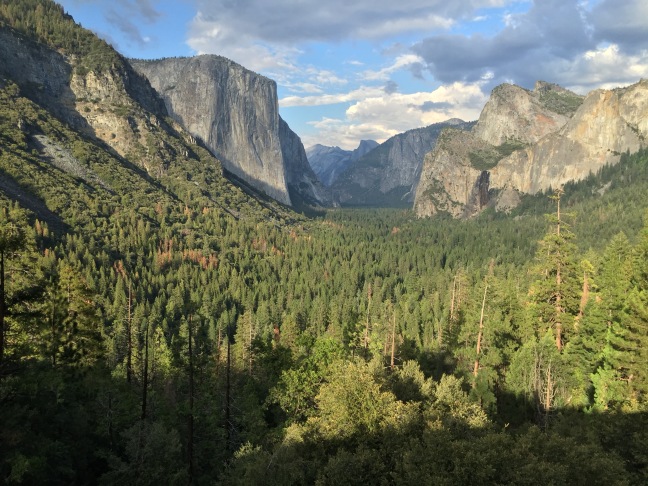
Speaking personally, I enjoyed Soarin’ Over California well before I ever made it out to the Golden State for the reasons I have described above. Before I went to California, Soarin’ was a tantalizing reminder of a goal that I wanted so very desperately to meet. The ride functioned almost as a preview of an amazing vacation yet to come. When I finally made it out to California, I had a new appreciation for Soarin’– I finally understood the scale and majesty of Half Dome and El Capitan. I remembered the way there is a certain quality of light and mist that hangs over the rolling mountains surrounding Napa Valley. I picked out a bench in Disneyland that I had sat on and soaked in the atmosphere of Main Street, USA on my last glorious afternoon there. Soarin’, for me, was a personal reminder of an objective I had met and a look back at a destination that was captivating and exciting. For others, I can only imagine that similar feelings proved true.

In many ways, Soarin’ Around the World operates as the inverse as Soarin’ over California. Where Soarin’ over California was focused and finely tuned to illustrating the diverse environments that were connected by their inclusion in the same state, Soarin’ Around The World follows no discernable logic in what landmarks we are shown. Instead, Soarin’ Around The World is ambitious and broad, and covers the entire globe. In so doing, the intimate charm and relatability that Soarin’ had with California is weakened, but something else is gained: Grandeur.

Soarin’ Around The World’s grandeur is seen in how the attraction is no longer limited to just one state, or just one nation. Now, the ride’s new scope encourages incredible diversity in what landscapes are shown. Cultural landmarks and natural wonders from all corners of the globe are united under Soarin’s thematic goal of showmanship. Far and away from Soarin’ over California’s old goal of illustrating the high points and exemplary features of California, now the entire scope of the globe is at the ride’s fingertips. What this greater scope accomplishes is something that than Soarin’ over California ever attempted to do. Where ‘Over California’ had moments of subtlety, ‘Around The World’s” scale is constantly impressive. In ‘California’, quiet moments over the waves of Big Sur or slipping over Redwood Creek weren’t grounded in constantly wowing its audience but coaxing different emotions out of them. Although EPCOT (and California Adventure, to an extent) treats Soarin’ as a thrill ride, I often heard Soarin’ Over California described as one of the more relaxing and calm rides in the park. I was apt to agree with that sentiment. Soarin’ Around The World is also by no means a thrill ride, either, but has much more gusto in presenting its content.

Next, the new destinations in Soarin’ Around The World can usually be quantified as the largest or biggest or best of their kind- Iguazu Falls is quickly chased with the Eiffel Tower. The Matterhorn quickly gives way to the unending ice fields of the Ilulissat Fjord. There are very quiet moments or peaceful moments of reflection, as before; all of Soarin’ Around The World is a highpoint and meant to excite and enthrall. This is not to say that Soarin’ Over California didn’t aim to accomplish similar emotions, but it just went about it in a much subtler way. If there are some lower key moments in Soarin’ Around The World, I would place them in Fiji, Africa, (before the CGI elephant interrupts your vista of Mount Kilimanjaro. More on that in a moment.) and the beginning of your flight over the Great Wall of China. These moments are still reasonably fast paced but the music in these sections is calmer, ethereal, and graceful. They’re well placed downbeats in a very up-tempo attraction.

Soarin’ Around the World’s high energy also comes from the way it handles transitions. Where ‘Over California’ just utilized hard cuts to the film and didn’t bother with thematically explaining why viewers would jump from location to location, ‘Around The World’ attempts to draw the rider’s attention to a “transition event” that obscures the view of the destination with something meant to be exciting: A plane flies right for your hang glider. A CGI elephant flings dust into your eyes. A whale just happens to time his jump perfectly so the splash takes you from Ilulissat to Sydney Harbor. I can understand why the filmmakers wanted to insert these moments into the film, but I think the execution is overtly flawed because of its conspicuousness. Where hard cuts can initially be jarring, by the end of the experience, they become expected and part of the deeper visual language that Soarin’ Over California employed. With every transition being a attention grabbing event that’s usually accompanied by a exciting or humorous gag, the overall pace and mood of Soarin’ Around the World is decidedly shifted into high gear. The addition of CGI animation also lends a generic feel for some of the scenes as it clashes with the natural or man-made wonders on screen. Most of the CGI is rendered and animated fairly well, but it can still stand out as something that was obviously added in and not part of the naturally filmed landscape, which is more than enough to enchant the rider.
I would be remiss if I did not mention two CGI “transition events” that are absolutely spectacular and far surpassed my expectations for the new ride. First, he new opening and takeoff sequence far surpasses the introduction to the old film. Where ‘Over California’ simply lifted guests into the omnimax dome to meet a dark screen that would suddenly become filled with clouds, ‘Around The World’ already has the clouds projected when the ride system first begins to move giving the illusion that you’re actually flying up and through the atmosphere. The music that accompanies this is also transcendent: Instead of having the familiar Soarin’ theme begin the attraction, Chords from a piano and a harp begin a progression up the musical scale that mirrors the climbing motion of the ride vehicle. This musical and physical synchronization is a sublime and awe-inspiring moment to experience and sets the tone in a much more effective way than ‘Over California’s’ fairly sudden opening moments.
Second, The Great Wall of China’s scene has a great few final moments as the traditionally orchestrated music climbs the pentatonic scale and speeds up the tempo. Both the hang glider and the film compensate their speed to match and the illusion of speed is one of the more successful moments in the new film. Also, although Soarin’ Around The World’s new international thematic content is felt throughout the entire film, it feels much more potent and genuine in this scene. The high timbre of the Chinese pipas and the lutes used to orchestrate this part of the film’s score jive incredibly well with the overall mood of the scene- serene and relaxing as we glide over the Great Wall in the opening seconds of the encounter, and high energy and frenetic as we begin to speed up over the luscious Asian landscape and quickly transition into Egypt’s Great Pyramids.

Speaking of the music and its orchestration for Soarin’ Around The World, the traditional and cultural orchestrations are easily the strongest part of the new attraction and the thematic aspect of the experience that undergirds it to EPCOT’s themes and ideas. The use of traditionally scored music resonates in a theme park setting like EPCOT because of the other uses of similar music in the park- upon walking into the China pavilion in World Showcase, similar sounds can be heard. Germany and France also have scenes in Soarin’ Around The World, but their musical accompaniments do not mesh in the same obvious way. However, their thematic content easily does: The architecture of Germany’s Neuschwanstein Castle can easily be related to the German Platz of the World Showcase Pavilion. Similarly, the penultimate scene in Soarin’ features the glittering façade of the Eiffel Tower, a landmark that also anchors World Showcase and the French pavilion. These sorts of references bring a sort of metaphysical synergy to EPCOT that really hasn’t been in the park in a very long time. By including the images and sights and sounds of some of the real destinations featured in World Showcase, Soarin’ Around The World offers a tacit acknowledgement that EPCOT is a showplace for the exploration of these foreign cultures and new ideas. Otherwise, how could we justify seeing the real Eiffel Tower on screen when its facsimile appears just within range of The Land pavilion? In so placing the Eiffel Tower on screen and in World Showcase, EPCOT’s thematic cultural content is deepened and unifies the park. I will not attempt to make a case for why international and cultural landmarks are showing up in this section of Future World, but still, they do appeal to World Showcase and EPCOT’s ethos as a whole. One can experience the majesty of France or Germany or Egypt or Australia or any of the other nations exhibited in many ways in both Future World and World Showcase, now.

In closing, both Soarin’ Over California and Soarin’ Around The World offer distinct and unique thematic experiences for EPCOT. Where ‘California’ could have been seen as more personal and organic, ‘Around The World’ is much more grand and imposing, but much more in tune with EPCOT’s core purpose. Both films, however, utilize a thematic alchemy that espouses the thrill of travel and the wonders of the natural and man-made world. The ways in which they differ are not as important as the ways in which they are similar. In that, they both inspire and entertain, and in so doing, both Soarin’ attractions have their rightful place in EPCOT’s roster of attractions.
Thanks for Soarin’ with us.
 After a week of frantic searching, glorious but impeding sunsets, and scouring every weather and atmospheric resource imaginable, the conditions were right and I finally was able to see Comet NEOWISE in the skies above Everglades National Park. I don’t think I’ve ever experienced anything quite like this. Seeing a natural phenomenon that only occurs once every 6800 years and setting eyes on an object that is hurtling through space is deeply humbling for both the amazing scientific phenomenon taking place and the abject spirituality of nature and the cosmos.
After a week of frantic searching, glorious but impeding sunsets, and scouring every weather and atmospheric resource imaginable, the conditions were right and I finally was able to see Comet NEOWISE in the skies above Everglades National Park. I don’t think I’ve ever experienced anything quite like this. Seeing a natural phenomenon that only occurs once every 6800 years and setting eyes on an object that is hurtling through space is deeply humbling for both the amazing scientific phenomenon taking place and the abject spirituality of nature and the cosmos.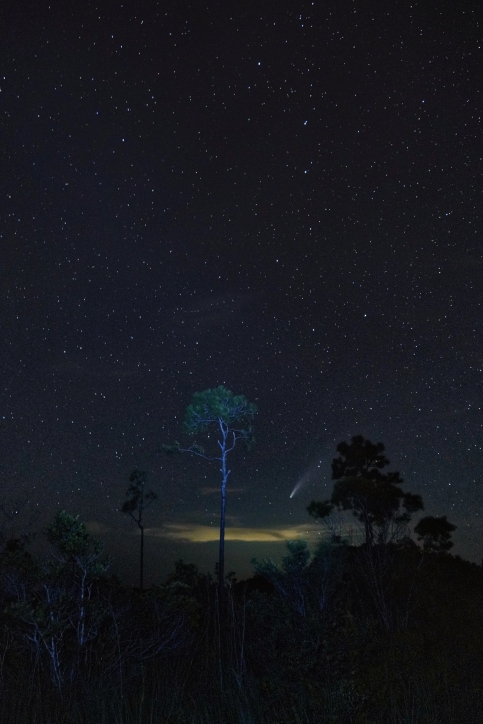

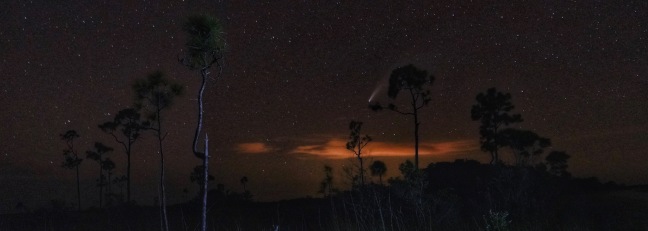



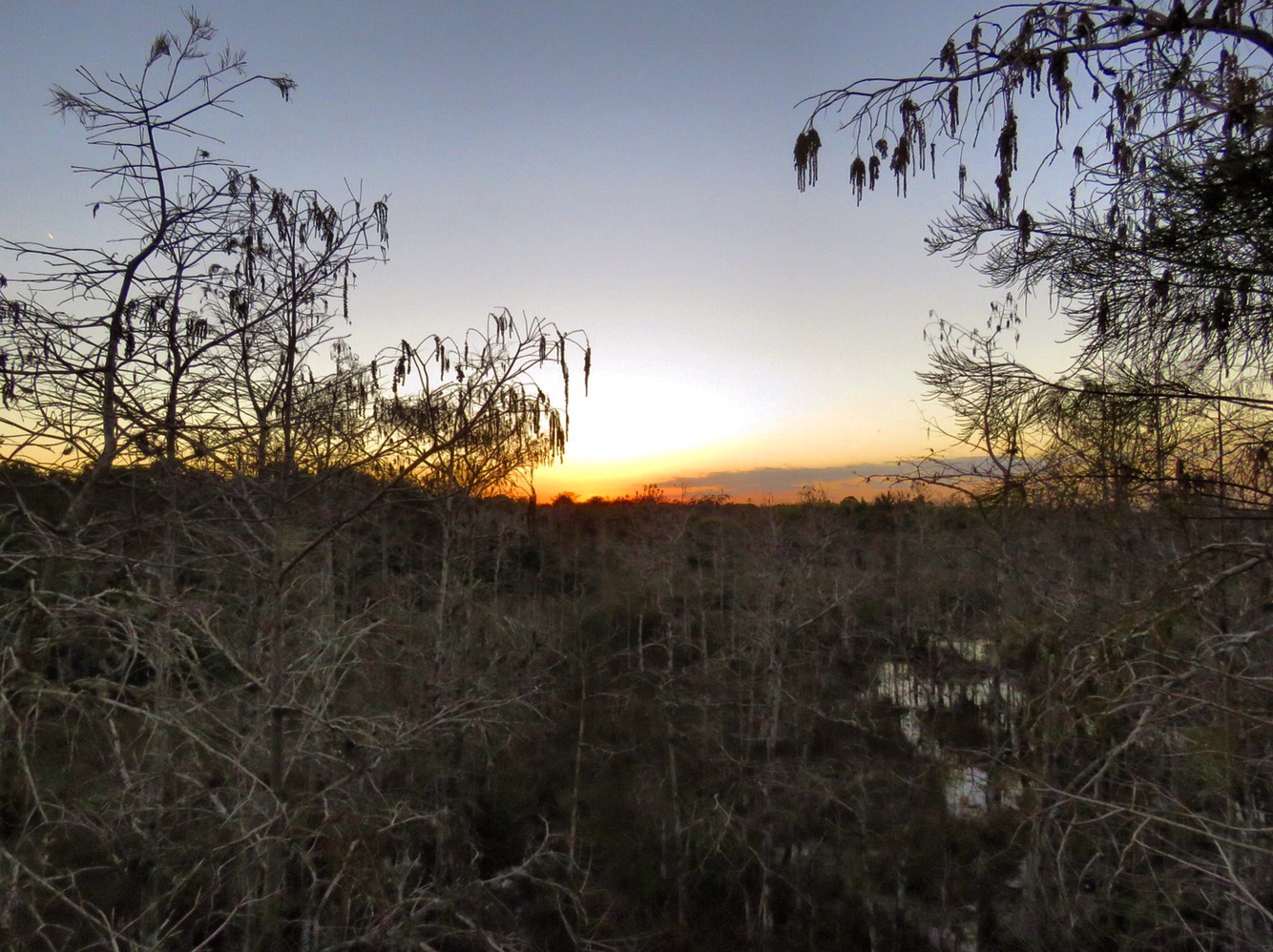


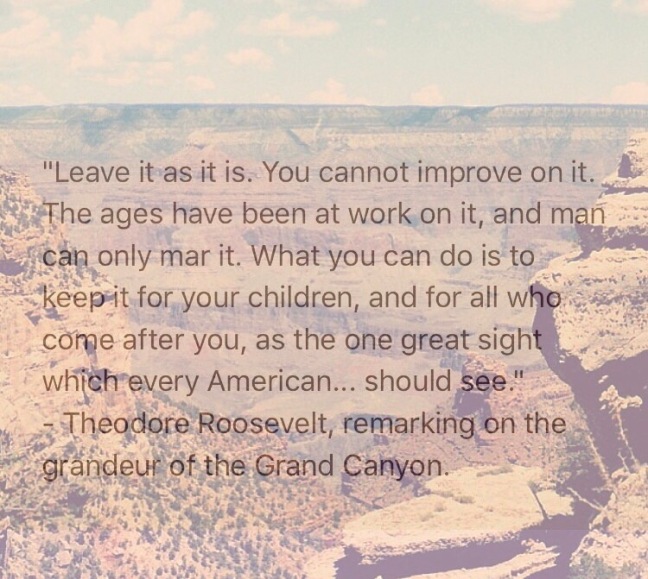






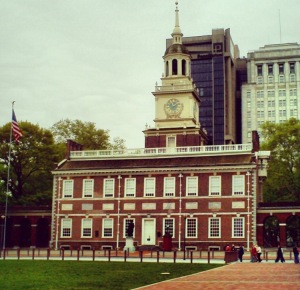





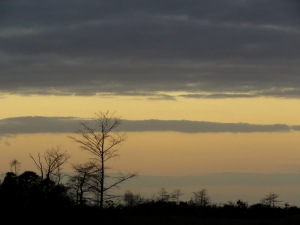



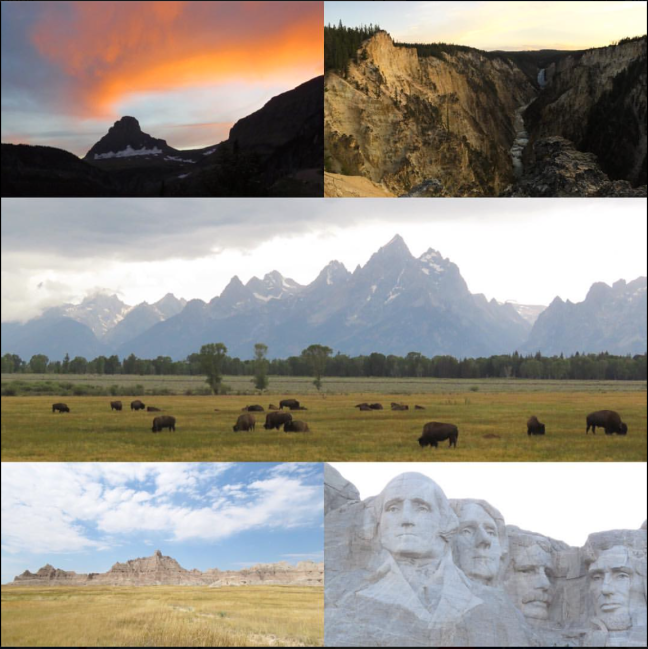



 rnia and honored the state’s rich history of aviation and environmentalism. Grizzly Peak Airfield, which premiered in 2015, aligned more closely with the content actually seen on screen on Soarin’ – the scenes of the High Sierras and Yosemite National Park jived well with the aesthetic profile of the area and complimented the land’s references to famed naturalist John Muir.
rnia and honored the state’s rich history of aviation and environmentalism. Grizzly Peak Airfield, which premiered in 2015, aligned more closely with the content actually seen on screen on Soarin’ – the scenes of the High Sierras and Yosemite National Park jived well with the aesthetic profile of the area and complimented the land’s references to famed naturalist John Muir.











